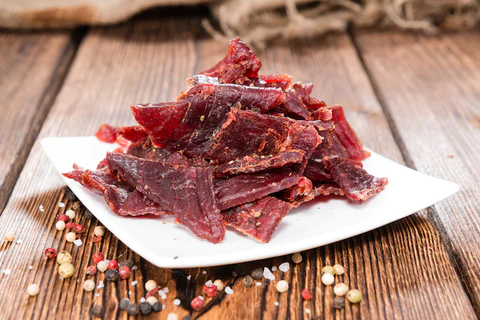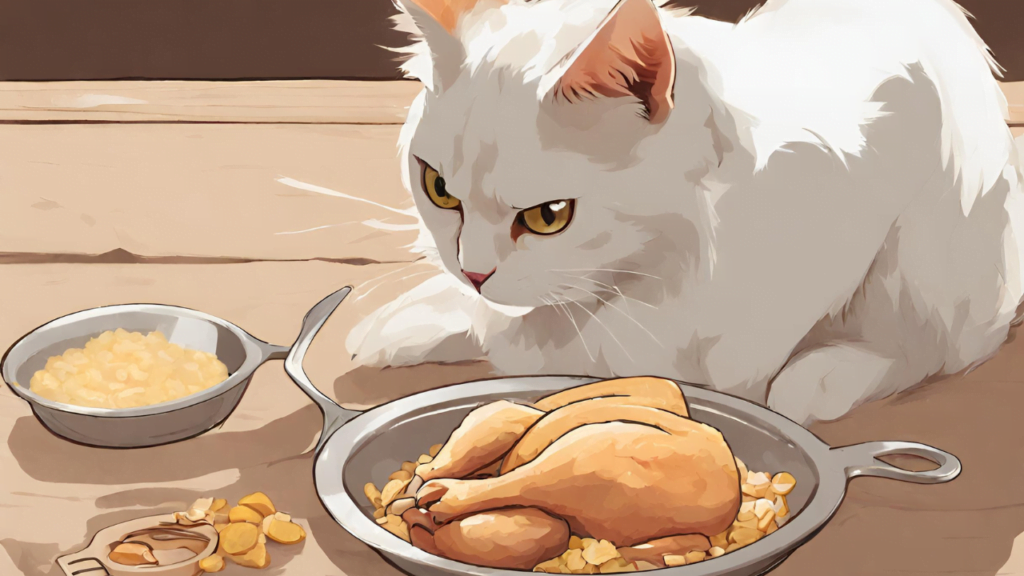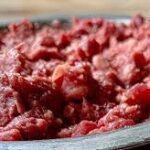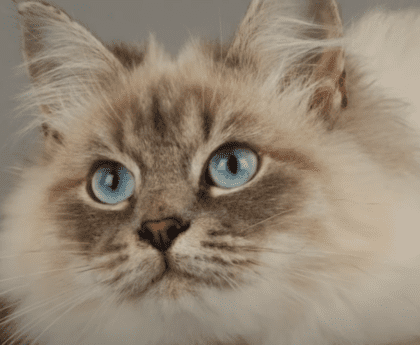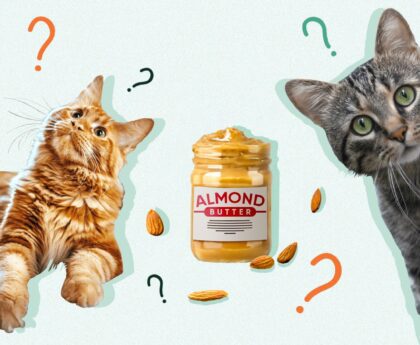- (A Vital Nutrient in Raw Food)
- The Importance of Taurine for Cats
- Taurine Deficiency in Cats: A Hidden Danger
- Taurine in Raw Cat Food
- How Does Cooking Affect Taurine?
- The Link Between Taurine and Cat Health
- How to Ensure Your Cat Gets Enough Taurine from Raw Food
- Conclusion: Prioritizing Taurine in Your Cat’s Diet
- FAQs about Taurine for Cats
(A Vital Nutrient in Raw Food)
In the world of feline nutrition, the spotlight often falls on a little-known amino acid called taurine.
This essential compound plays a pivotal role in maintaining the health and well-being of your beloved feline friend.
In this article, we will delve into the significance of taurine for cats, especially when it comes to their raw food diet.
The Importance of Taurine for Cats
Taurine, often referred to as a “conditionally essential” amino acid for cats, is crucial for their overall health.
It supports various bodily functions, including:
Vision
One of the primary roles of taurine is maintaining healthy vision in cats.
Taurine deficiency can lead to eye problems, potentially causing blindness.
Heart Health
Taurine contributes to the proper functioning of your cat’s heart.
A lack of taurine can result in heart issues, impacting your cat’s cardiovascular health.
A Healthy Coat
A diet rich in taurine ensures your cat’s fur remains shiny and lustrous. Taurine deficiency can lead to a dull and unhealthy coat.
Taurine Deficiency in Cats: A Hidden Danger
Taurine deficiency is a genuine concern for cat owners.
Cats are unique because they cannot synthesize taurine in their bodies efficiently.
This makes it vital to provide them with adequate taurine through their diet.
Why Raw Food for Cats?
Raw food diets have gained popularity in recent years, with many cat owners turning to this option for their pets. But what makes raw food a good choice for cats?
Raw food closely mimics a cat’s natural diet, which primarily consists of meat. This diet is rich in essential nutrients, including taurine, which cats need to thrive.
However, it’s essential to weigh the pros and cons of raw food for your feline friend.
Pros of Raw Food Diet
- High nutritional value
- Improved digestion
- Shinier coat
- Stronger immune system
Cons of Raw Food Diet
- Risk of bacterial contamination
- Nutritional imbalances if not prepared correctly
Taurine in Raw Cat Food
Raw cat food is an excellent source of taurine. Meat, especially heart and liver, is a taurine-rich food source.
When cats consume raw meat, they naturally get the taurine their bodies require.
How Does Cooking Affect Taurine?
Cooking can break down taurine in food. If you choose to cook your cat’s meals, you may need to add taurine supplements to ensure they receive an adequate amount of this vital nutrient.
The Link Between Taurine and Cat Health
Taurine’s Role in Vision
Taurine is essential for maintaining the health of the cat’s retina.
A deficiency can lead to a condition called central retinal degeneration, which can result in blindness.
Taurine and Heart Health
Taurine supports the electrical activity of the heart.
Without enough taurine, cats may develop heart issues, which can be life-threatening.
Taurine for a Healthy Coat
Adequate taurine intake leads to a shiny and healthy coat. It also reduces the likelihood of skin problems in cats.
How to Ensure Your Cat Gets Enough Taurine from Raw Food
Balanced Raw Food Recipes
When preparing a raw food diet for your cat, it’s crucial to create balanced recipes that include taurine-rich ingredients like heart and liver. Consulting with a veterinarian or feline nutritionist can help you create a diet that meets your cat’s nutritional needs.
Supplements for Taurine
If you opt for a cooked diet or have concerns about taurine intake, supplements are available.
These should be administered under the guidance of a veterinarian.
Unlike dogs, cats lack the innate ability to synthesize taurine from various amino acid components.
This makes it vital to ensure that a cat’s diet includes an abundance of this essential compound.
The reason behind cats’ inability to internally produce taurine lies in their limited enzymatic activity of Cysteine Dioxygenase and Cysteine Sulfinic Acid Decarboxylase in their physiological processes.
To meet their taurine requirements, cats primarily rely on their consumption of muscle tissues.
Taurine, an indispensable amino acid for the Felidae family, which encompasses both adult cats and kittens, plays a pivotal role in maintaining their ocular and cardiac health. Furthermore, this compound is crucial for fetal development, growth, reproduction, neuro-modulation, visual acuity, auditory perception, hemostasis, immune reactivity, antioxidation, and bile acid synthesis.
Sources of Taurine in Raw Nutrition Taurine is predominantly found in the musculature and visceral organs of animals, making it an essential component of their diet.
Variations in Taurine Content Among Different Proteins The levels of taurine can vary among different animal proteins and even within distinct muscular and visceral tissues.
Taurine Requirements for Dogs It’s important to note that taurine is not considered a dietary essential for canines.
Typically, dogs can synthesize sufficient taurine internally when their diet contains an adequate supply of sulfur amino acid precursors, specifically methionine and cysteine.
Taurine in Uncooked Diets For those following a well-rounded dietary approach like the Prey Model Raw (PMR), which emphasizes unprocessed meat cuts rich in taurine, or preparing home-cooked diets, it’s crucial to be aware that heat during cooking can lead to a significant loss, approximately 65%, of the taurine content. Additionally, plant-based foods and grains contain negligible amounts of taurine.
The National Research Council (NRC) has established both minimum and recommended taurine content per 1000 kilocalories for feline nutrition:
For Adult Cats
- Minimum Requirement: 0.08 grams
- Recommended Allowance: 0.1 grams
For Kittens
- Minimum Requirement: 0.08 grams
- Recommended Allowance: 0.1 grams
Enhancing Taurine Intake The best way to ensure that your feline companions receive ample taurine is by feeding them whole prey, which is naturally rich in taurine and nutritionally balanced for their size.
In the absence of whole prey, adopting a Franken Prey feeding approach can provide various protein sources in the form of unprocessed cuts, ensuring sufficient taurine intake.
When a raw, ground diet is administered, a taurine supplement becomes necessary due to the increased surface area exposed to the atmosphere, which leads to taurine oxidation.
Providing a Taurine-Rich Diet Muscle tissue contains relatively high taurine levels, with darker meat varieties indicating muscles with higher functional demands and, consequently, elevated taurine concentrations.
The heart muscle, known as the most toilsome within the organism, harbors the highest taurine content.
Larger animals, like cattle, exhibit lower taurine concentrations, while smaller fauna have higher levels. Fish, avian species, and rodents are generally abundant sources of taurine.
Preserving Defrosted “Hematic Fluid” (Myoglobin) It’s crucial to include the defrosted “hematic fluid” or myoglobin obtained during the thawing process in your cat’s diet. When meat is defrosted, a significant portion of the available taurine remains in the meat juices, known as myoglobin, which contains essential nutrients, including taurine.
Taurine Variation Among Various Proteins Taurine levels vary depending on the protein source and the overall size of the animal. Different muscular and visceral tissues within the animal’s anatomy also exhibit varying taurine levels. Taurine levels show distinct patterns in the following categories of protein sources:
- Bovine
- Avian (Chicken)
- Anatidae (Duck)
- Aquatic (Fish)
- Ovine (Lamb)
- Porcine (Pork)
- Galliformes (Turkey)
Data on Taurine Content Information about taurine content in meat cuts is derived from research into taurine concentrations within animal feed components.
The cooking process significantly affects taurine content, as demonstrated by A. R. Spitze et al. in their 2003 study.
It’s worth noting that concerns about taurine overconsumption are unfounded, as this water-soluble compound is effectively regulated by the feline’s renal system, with any excess taurine being excreted in the urine.
Conclusion: Prioritizing Taurine in Your Cat’s Diet
Taurine is an indispensable nutrient for cats, and it’s even more crucial when feeding them a raw food diet.
Ensuring your feline companion receives an adequate amount of taurine can lead to a healthier, happier, and more vibrant life.
FAQs about Taurine for Cats
- Is taurine necessary in a cat’s diet?
- Yes, taurine is essential for a cat’s overall health, especially for their heart, vision, and coat.
- Can I provide taurine through commercial cat food?
- Many commercial cat foods are formulated with taurine. However, in raw food diets, it’s essential to ensure they get enough from natural sources.
- How can I tell if my cat has a taurine deficiency?
- Signs may include heart problems, vision issues, and a dull coat. Consult a vet for a proper diagnosis.
- What are good sources of taurine in a raw food diet?
- Heart, liver, and dark meat from poultry are excellent sources of taurine.
- Is it safe to cook taurine-rich foods for my cat?
- Cooking may reduce taurine content, so if you choose to cook, consider adding taurine supplements to maintain adequate levels.
In conclusion, taurine is a crucial element in your cat’s diet, particularly in raw food regimens. Prioritize this amino acid to ensure your feline friend enjoys a healthy and fulfilling life. If you’re ready to explore raw food diets for your cat, make sure to research and consult with experts to craft a balanced and taurine-rich menu. Remember that your cat’s well-being largely depends on the choices you make as a caring and responsible owner.



